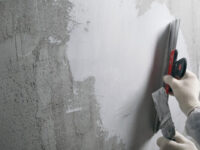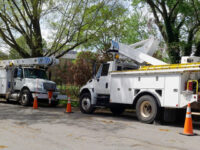Cement Siding
When it comes to replacing or remodeling a home’s exterior, many homeowners are looking for a product that is durable, looks good, and requires little maintenance. Vinyl siding fits this bill nicely. With a variety of colors, textures and designs to choose from, this type of cladding gives homeowners an opportunity to tailor their homes’ aesthetics to match their preferences.
There is also the fact that the material is relatively inexpensive. This means that homeowners are able to achieve their dream homes at a fraction of the cost they would have spent on a more expensive option, such as natural wood.

In addition, vinyl is extremely tough and can withstand a number of environmental conditions, such as rain, sleet, snow, hail and high winds. This is why most manufacturers offer a 50-year warranty on their products. This is a very long guarantee, particularly for any building materials.
As with any material, there are a few things that homeowners should be aware of before purchasing vinyl siding. It isn’t a one-size-fits-all option, so it may not be ideal for a particular climate. The reason for this is that the planks aren’t glued to the wall, instead being fastened with a partial nailing system that allows for float created by expansion and contraction due to temperature changes.
Another consideration is that the product will not withstand a direct hit from a baseball, golf ball or other object of similar size. This isn’t to say that the vinyl cannot be damaged, but it should not be subjected to abuse that could cause harm.
Finally, a homeowner should always work with a professional when installing vinyl siding. Attempting to do this on one’s own can result in gaps that let in water, moisture and pests. This can cost more in the long run than simply hiring a contractor to do it correctly in the first place.
Homeowners often invest in vinyl siding because it is cost-effective and looks great. However, homeowners should consider other factors when deciding on new cladding. For example, they should look for durability and the ability to withstand harsh weather conditions.
The most durable vinyl sidings are made of polyvinyl chloride (PVC) resin. Polyvinyl chloride is not only highly durable but also environmentally friendly. It uses less chlorine than other plastics. It also produces fewer toxic chemicals when incinerated. Moreover, it is more resistant to moisture than other plastics and metals. Unlike aluminum, it does not degrade in water.
Its resistance to moisture helps keep the inside of your house cool and comfortable, especially during the summer. It also prevents your air conditioning from running for longer than it should. The result is lower utility bills and increased energy efficiency.
Furthermore, it is an eco-friendly material that does not require painting and requires less maintenance than other types of cladding. It is also resistant to fire, insects and mold. Additionally, it can withstand harsh weather conditions such as rain, wind and sun. Moreover, it has a long lifespan and can easily be repaired or replaced.
Another advantage of vinyl siding is its insulation properties. It prevents heat loss in winter and heat gain in the summer, which saves you money on heating and cooling costs. It is recommended that you choose a vinyl siding with an R-value of 7 or higher.
Vinyl siding can be used to insulate a new home or replace existing exterior insulation. It is also a good option for remodeling homes that have rotting or damaged exterior walls.
When paired with other energy-efficient products, such as new doors and windows, vinyl siding can significantly reduce your home’s energy consumption. It is important to note, however, that the amount of savings you can achieve depends on a variety of factors, including your home’s size, climate and existing insulation.
While it is a good idea to have an insulator installed, if you do not want to spend the extra money, you can also insulate vinyl siding by covering it with a layer of rigid foam insulation. This will boost its R-value and make it even more effective at preventing thermal bridging.
While there is no such thing as a fireproof siding, many types of siding are better at resisting flames than others. Vinyl is a good example. Typically, it can withstand a great deal of heat before it melts, which allows more time for firefighters to reach your home in the event of an emergency. This can significantly reduce damage and prevent your home from becoming a firetrap, while also giving you more peace of mind.
Its chemical makeup also helps to make it resistant to flames. The chlorine base of PVC makes it less likely to ignite, and even if it does, it doesn’t start to self-ignite until it reaches temperatures of around 730degF (387degC), which is much lower than the typical framing lumber that commonly used as a building material.
If you live in a area that is at high risk of wildfires, it’s important to look for siding with a class A fire rating when designing and building your new home. Fortunately, there are plenty of options for homeowners that can achieve a class A rating without sacrificing convenience or appearance. Fiber cement, for instance, is a durable and beautiful siding type that can be customized to your preferred style. It has a class A fire rating and can withstand up to several hours of heat before melting, which is more than enough time for firefighters to get to your home.
Another benefit of vinyl siding is that it doesn’t absorb water, which can slow down the spread of a fire. Additionally, it doesn’t release a lot of toxic smoke when it burns. All burning materials emit a certain amount of toxic fumes, however, so it is essential to install smoke alarms in each bedroom and outside the sleeping areas on all levels of your home.
Lastly, if you have vinyl siding, it is important to keep in mind that only four percent of house fires begin with the exterior wall surface. That’s still a good reason to practice fire drills and have an evacuation plan for your family in case of an emergency, but it’s also important to choose noncombustible materials when designing and building your home.
The exterior of your home says a lot about your property. It is the first thing that guests, neighbors and passersby notice and may draw their own conclusions about your home. As a result, you need to choose the right cladding to make sure it reflects the way you want your home to be perceived.
Vinyl siding is a popular choice that offers a wide range of colors, styles and textures to meet your design needs. It is also a cost-effective alternative to other cladding materials. In addition, it is extremely easy to install and maintain.
In fact, you can even use a tool like a nail gun to fasten the vinyl to your wall. However, the best option is to have a professional install the vinyl for you. It is much safer and will ensure that the work is done properly. This will prevent damage to your wall, window frames and caulking.
You can do a DIY installation of vinyl siding, but you will need to have a few tools and a bit of experience. It is helpful to have a friend or two assist you in the process as well. Standing on ladders all day and dealing with lengthy, unwieldy pieces of vinyl is not an ideal task to try on your own.
The first step in the vinyl siding installation process is to remove the old vinyl. This can be done by gently prying up the top of the vinyl where it overlaps the piece below it. Then, you can pull up the underlying piece and then slowly pull out each of the nails holding it in place. Once all the old vinyl is removed, you will need to prepare your walls for the new installation.
Once your walls are ready, you can begin installing the vinyl. It is recommended that you use a level to ensure the panels are straight. You can also use a power drill to help you with the process. When cutting vinyl, you can use a utility knife or scoring tool to speed up the process.





